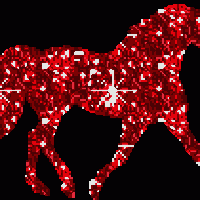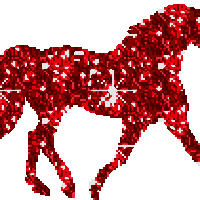At a recent family gathering, my nine-year old niece used her new colored pens to draw animals on scraps of paper she found. The first horse she drew was a very nice blending of blues and yellows and greens and was kneeling in a field of tall grass. What does this have to do with Management? A lot really. Keep reading.
Interest and Motivation
She made several more horse drawings, in assorted artistic shades, and gave them to her grandparents and an uncle. I was impressed by the sense of color balance she demonstrated, as well as her skill level in drawing a horse that actually looked like a horse.
She made several more horse drawings, in assorted artistic shades, and gave them to her grandparents and an uncle. I was impressed by the sense of color balance she demonstrated, as well as her skill level in drawing a horse that actually looked like a horse.
Late in the day she handed one to my sister. I jokingly asked her where mine was. She turned, matter-of-factly, and asked me what color I wanted it. I picked red. Just a few minutes later she returned and presented me a mono-chromatic red drawing of a stationary horse.
It’s a wonderful drawing that my wife has already hung on the refrigerator door, but it is not the artistic, multi-hue drawing of a horse in motion that she had done in all her others.
Be Careful What You Ask For
Have you ever done that at work? Have you ever been impressed with the way an employee completed a project so you assigned them another one like it and it got done, but wasn’t exactly what you wanted? Why do you suppose that was? What can we learn from my request of my niece that can help us as managers.
Have you ever done that at work? Have you ever been impressed with the way an employee completed a project so you assigned them another one like it and it got done, but wasn’t exactly what you wanted? Why do you suppose that was? What can we learn from my request of my niece that can help us as managers.
What Not to Do
Granted it was a joking request without significant consequences, but here is what I did wrong as I asked her to do something:
Granted it was a joking request without significant consequences, but here is what I did wrong as I asked her to do something:
- Didn’t clearly tell her the desired end product
- Didn’t tell her what it was that I liked about the relevant previous efforts
- Didn’t involve her in the planning
- Didn’t monitor her progress
- Didn’t establish a timeline
- Didn’t effectively motivate her to produce her best
It is the same way with the people that work for you. If you want to get the best out of them, you have to give them all the information they need to succeed. Let them know what you expect. Let them know what will be used to evaluate it as a success. Get them involved in the planning. Then, and most importantly, motivate them to do their best.
Motivation and Enjoyment
We all do best the things that we most enjoy doing. I got into management because I could do the planning and directing that it requires. I got good at managing because I spent time doing it. I spent time managing because I enjoyed doing it.
We all do best the things that we most enjoy doing. I got into management because I could do the planning and directing that it requires. I got good at managing because I spent time doing it. I spent time managing because I enjoyed doing it.
If you have an out-going people person, don’t stick them in a back room and have them spend all day adding numbers. They will soon get bored, start making mistakes, and either quit or get fired. Don’t put a shy, introverted person into sales and have them make cold calls. They will hate it and won’t make many sales. Don’t put a dreamer in charge of your accounting and don’t put a detail-oriented person in charge of strategic planning.
What I Did Right
While my niece’s drawing wasn’t exactly what I wanted, it was a nice drawing. Here are the things I did right in making the request:
While my niece’s drawing wasn’t exactly what I wanted, it was a nice drawing. Here are the things I did right in making the request:
- Did tell her I wanted her to do something
- Did tell her I liked her previous drawings
- Did avoid micro-managing her
- Did thank her for making the drawing
Try This Yourself
After you have assigned a task, and had the work come back less than what you wanted, look first at what you did wrong – as I did above. Then you can look at what the employee may have done wrong. Be sure to tell them what they did right and that you appreciate them making the effort. Finally, make sure you take a moment to look at what you did right. If you don’t do positive reinforcement for yourself, you may lose some of the desirable actions.
After you have assigned a task, and had the work come back less than what you wanted, look first at what you did wrong – as I did above. Then you can look at what the employee may have done wrong. Be sure to tell them what they did right and that you appreciate them making the effort. Finally, make sure you take a moment to look at what you did right. If you don’t do positive reinforcement for yourself, you may lose some of the desirable actions.
——-
If you have any questions or comments about this article, or if there is an issue you would like us to address, please post them on our Management Forum to share with the entire group.


